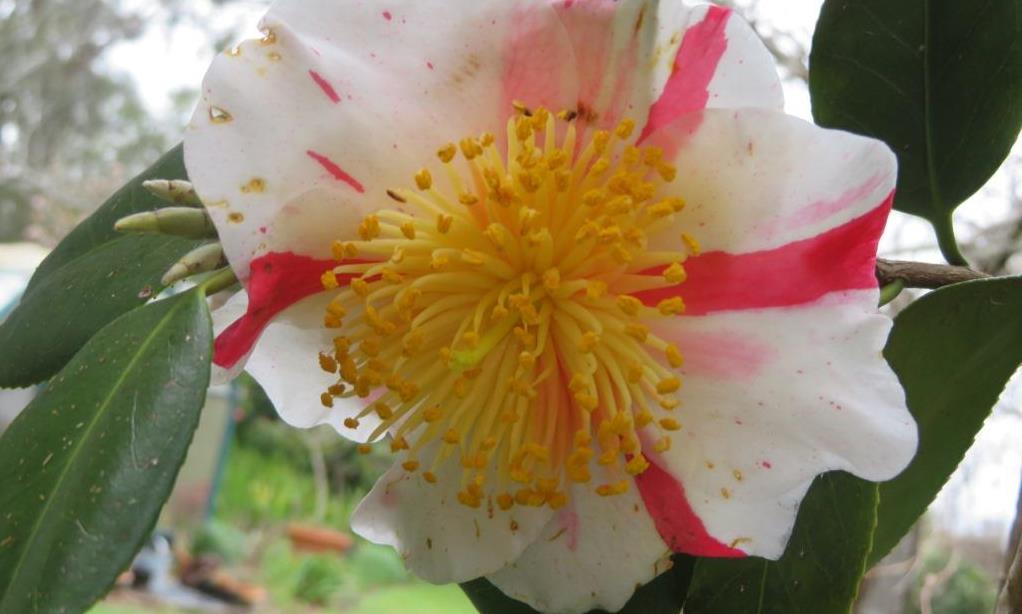
From Trevor Nottle
Just because our garden wisdom tell us gardens in winter are asleep or resting doesn’t mean that we should accept that idea as set in cement.
In fact our gardens are only dormant for a very short period after the plants have died down (perennials) or dropped their leaves (trees and shrubs). By mid-winter growth is already underway; it is just that it isn’t obvious – the action is happening underground with new root growth and nutrients being passed up the stems to begin swelling buds with nascent leaves and flowers.
This promise of hope is bolstered by other plants, evergreens, that are already flowering in the winter cold and wet. Prime among these are Camellias. By tradition these are grown in the Adelaide Hills where many make small trees and have been going strong for 150 years but there are many examples of the plant found in the older suburbs on the Adelaide Plains and further afield in places like the Clare Valley. These Camellias, planted from the 1850’s onwards mostly came from New South Wales, in particular from ‘Camden Park’ and Thomas Shepherd’s nursery. Brought around the coast by sail they arrived in local collections and nurseries. Substantial numbers still survive at ‘Grove Hill’ near Norton Summit, the old Kemp’s nursery site in Aldgate Valley, at Newman’s Nursery in Tea Tree Gully and the survivors from ‘Leawood Gardens’ which was a tea garden at the Devil’s Elbow. The big shrubs from this site were relocated to ‘Carrick Hill’ and the main street of Stirling when the SE Freeway was built.
These old Camellia varieties, a mixture of Japanese, European and Australian hybrids are tough and hardy survivors, which explains why hoary shrubs still survive in St Peters, Campbelltown, Payneham and other old suburbs.
With such a long record of success local gardeners should feel encouraged to plant more Camellias. The old superstitions about them being delicate have been superseded by modern cultural practice – some soil modification to create neutral to slightly acidic conditions, and a wide deep mulch of coarse shredded tree waste will permit experimentation and a pleasing degree of success. But do seek out the tough old varieties to try first. Jon Hall of Newman’s Nursery is a good source, or consult members of the Camellia Society on open days at ‘Stangate House’, Aldgate.)
Adelaide Hills gardeners can take a broader view and really give their gardens a big winter lift by planting Camellias across a wide range of new hybrids. New gardens in Mt Barker, Nairne, Littlehampton, Meadows, Woodside and other developing areas would benefit considerably by a judicious selection. Here are a few new directions to demonstrate what can be achieved.
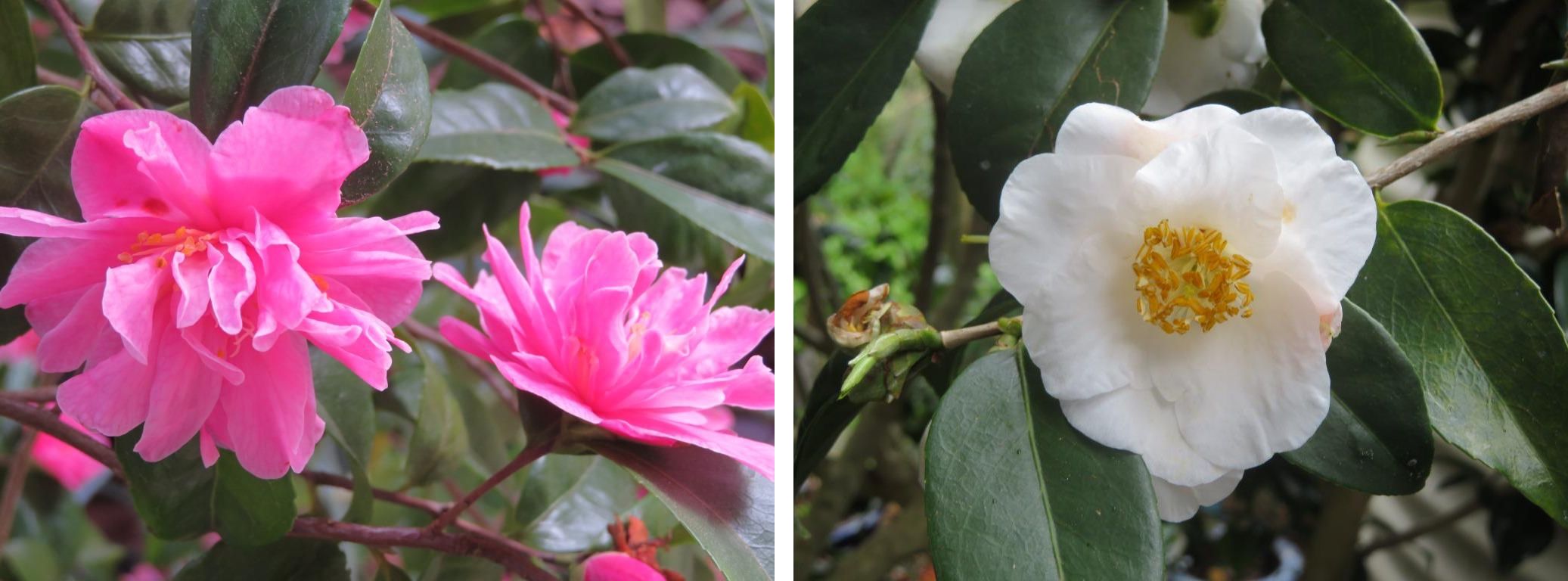
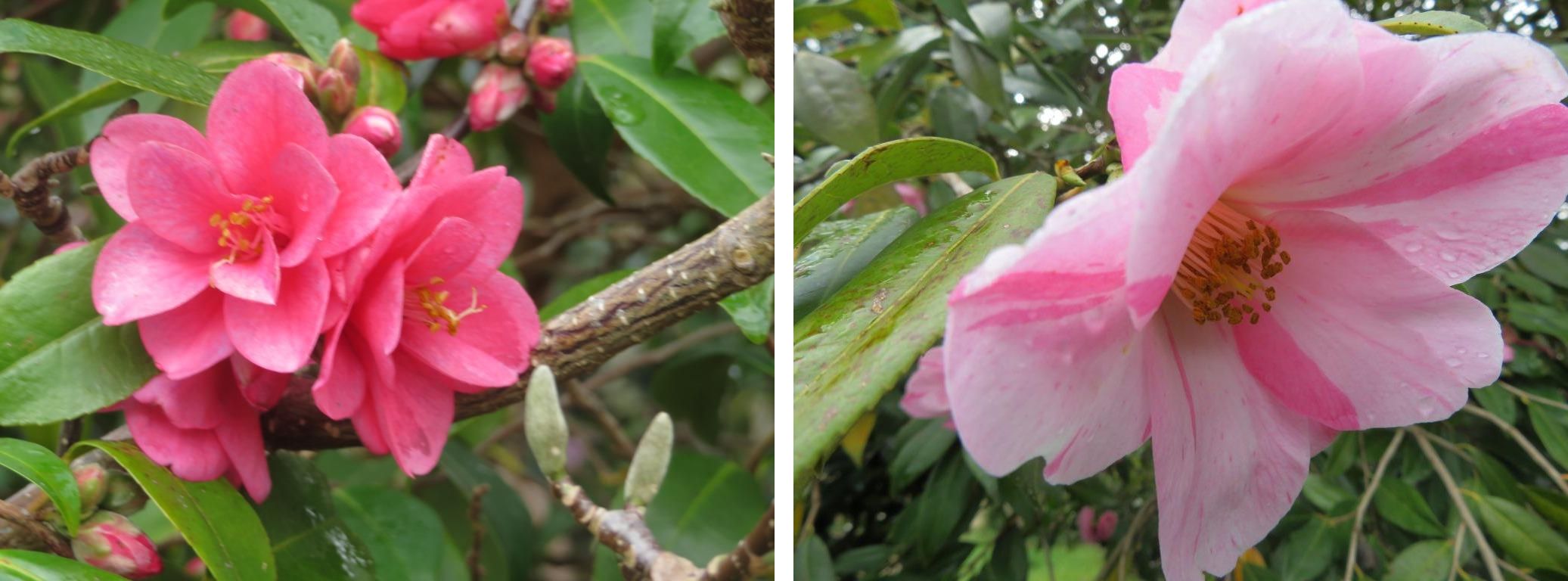
Inter-specific hybrids: of these there are many from the numerous ‘Paradise’ series raised in Australia to individual examples such as ‘Cornish Snow’(UK) and ‘Lamertsii’ (California)
Reticulata hybrids: developed from an ancient group of Camellias developed in China in monastery, palace and temple gardens since the 17th C at least. ‘Captain Rawes’ was one of the first imported to England early in the 19thC by the eponymous sea captain at the behest of his plant loving sister in 1820. Since then many hybrids have been introduced. Growing to tree-sized proportions these are magnificent plants. ‘Captain Rawes’ still planted but seek out ‘Fluted Orchid’, ‘Francie L’, ‘Dr Clifford Parks’ and ‘Zipao’(‘Purple Gown’) to add touches of distinction to a Hills garden in winter..
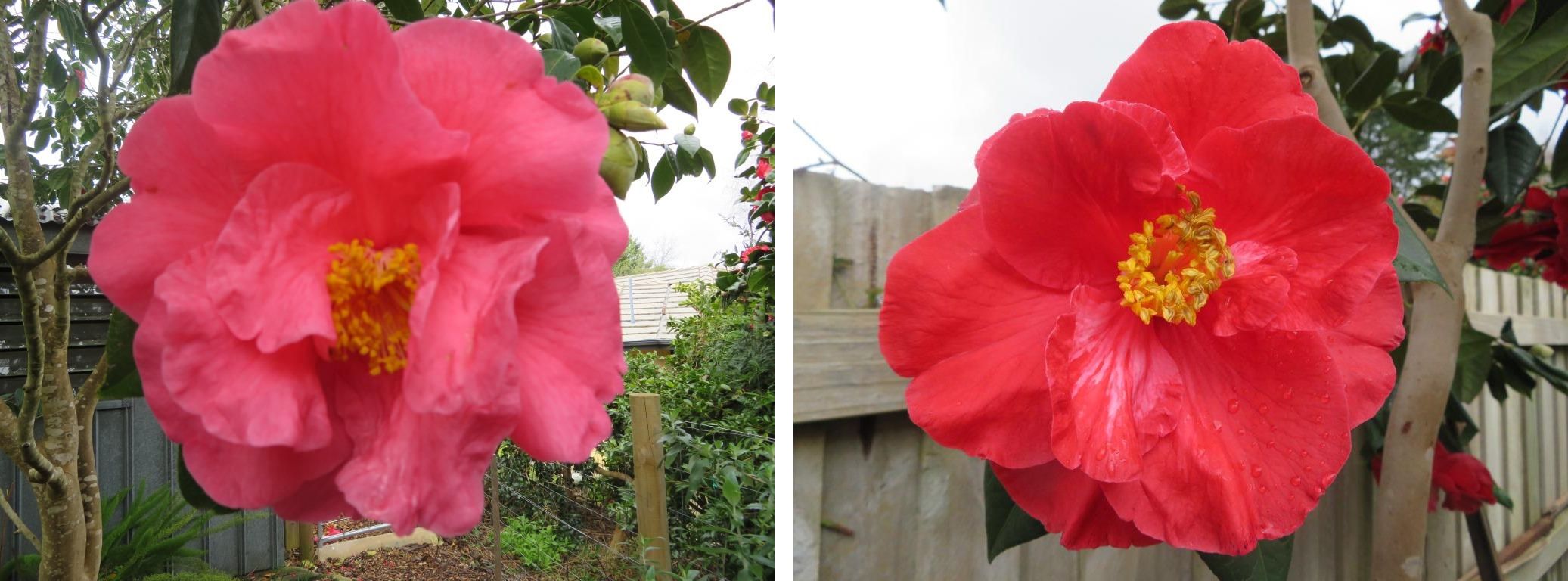
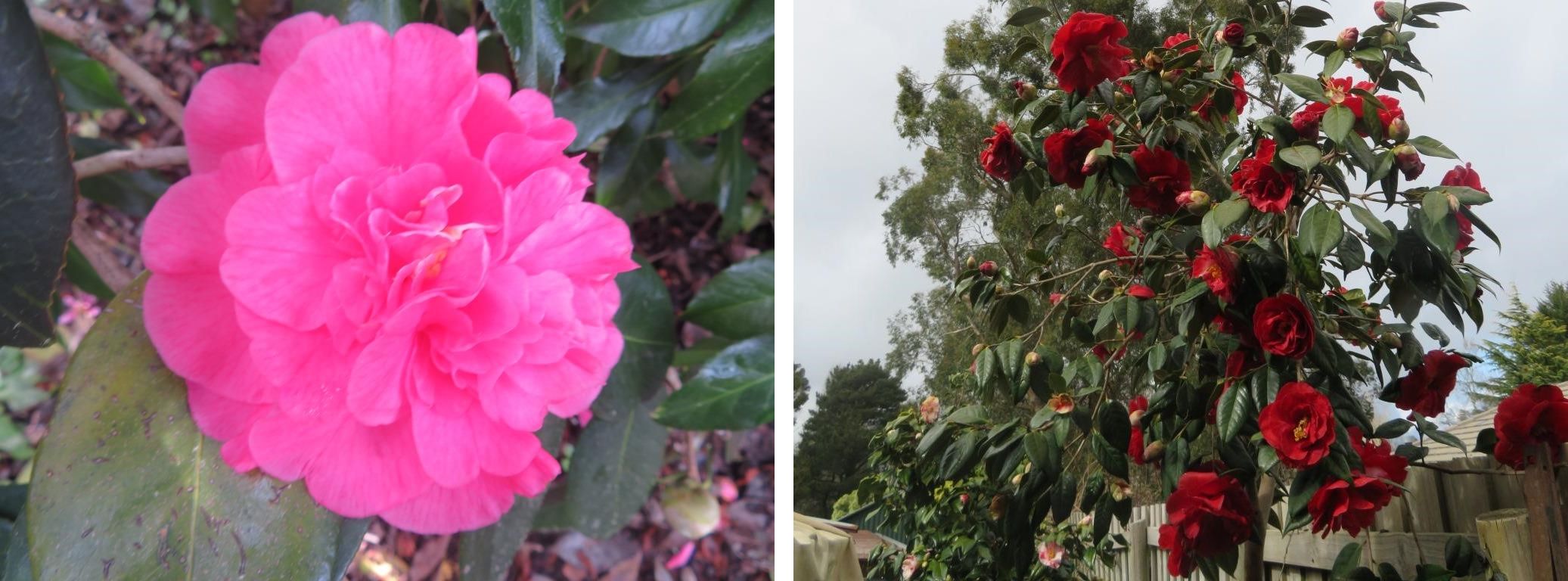
Higo camellias are a completely different group raised exclusively by samurai warlords in Japan since the pre-Tokugawa period. The flowers are always single and often striped and they always have stamens arranged in a wide flaring crown at the centre. Many names make reference to patterned silks and brocades of Kimono textiles such is their very considerable beauty. ‘Dewatairin’ (‘Golden Temple’) is fairly well known but ‘Yamato Nishiki’ (‘Brocade of Old Japan’), ‘Gosho Zakura’ (‘Cherry Blossom Palace’), ‘Asahi no Minato’ (‘Port of the Rising Sun’) and ‘Showa No Hikari’ (‘Glory of Showa’) would all be adornments in any Hills garden.
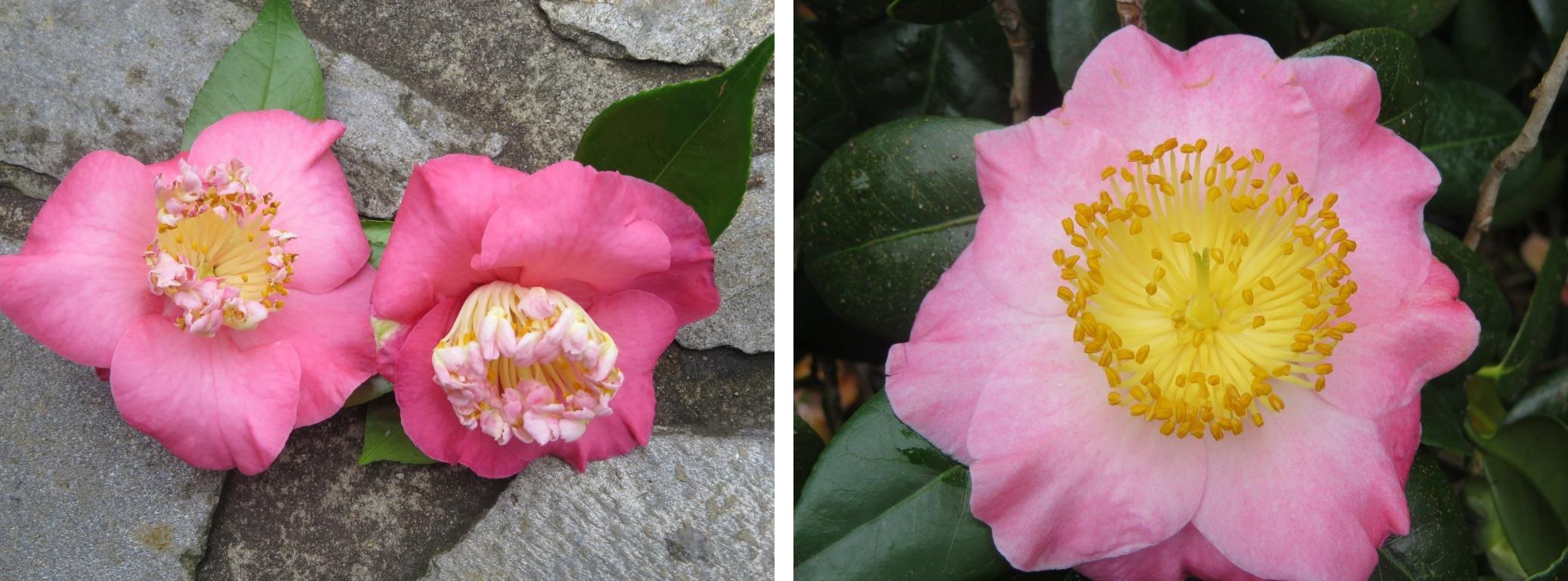
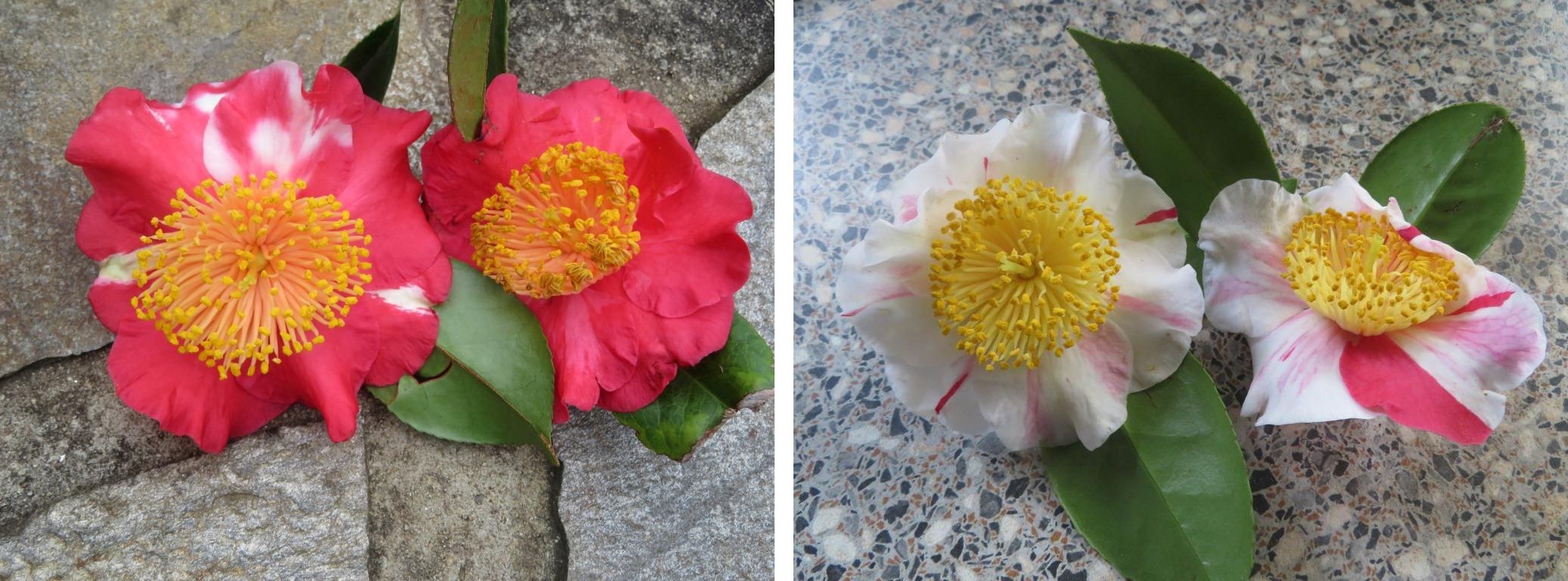
The National Trust (SA) garden at ‘Stangate House’ in Aldgate holds a very good representative collection of Camellias and holds regular open days during the Camellia season. The collection is maintained by volunteers and members of the Camellia Research Society (Adelaide Hills branch). Anyone seeking to improve the beauty and diversity of their own garden could do no better than visit with a notebook and camera during the season. Obtaining desired varieties may take some persistence but don’t be put off and keep asking and ordering at local nurseries. March and April are good times to make enquiries as at this time retail outlets are making up orders with Victorian and New South Wales specialist growers who have large stock collections from which they propagate.
